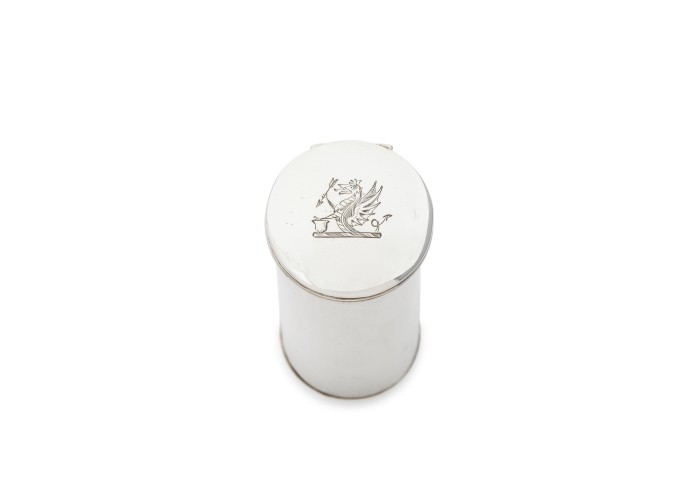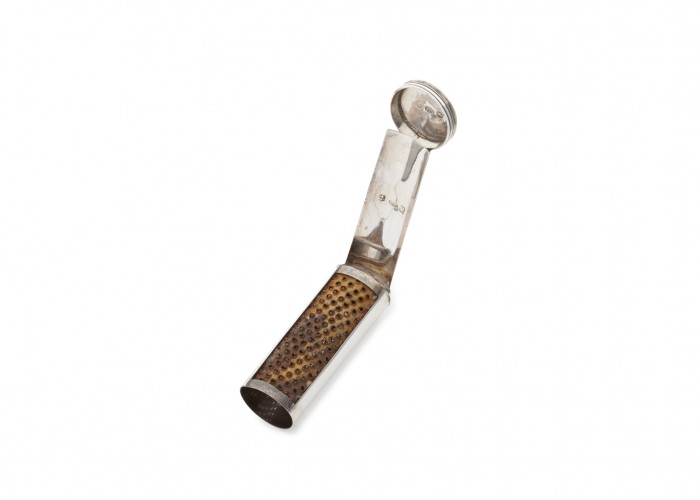Campaign Nutmeg Grater
This elegant silver nutmeg grater belonged to Sir Galbraith Lowry Cole. He was a senior officer in the 27th (Inniskilling) Regiment of Foot, an Irish regiment that fought bravely at the Battle of Waterloo. Nutmeg was an expensive luxury, and to carry a nutmeg grater on campaign was a mark of wealth and a lavish lifestyle.
This elegant silver nutmeg grater is displayed beside a field canteen containing wine bottles in the Inniskillings Museum, Enniskillen Castle, Northern Ireland. Both articles belonged to Sir Galbraith Lowry Cole (1772-1842), second son of the Earl of Enniskillen. He commanded the 4th Division, which included the 3rd Battalion of the 27th (Inniskilling), in the Peninsular War (1808-1814) where he was twice wounded. He was not present at the Battle of Waterloo because he was on his honeymoon. He ended his career as Governor of Cape Colony in South Africa.
Even in an officers’ mess the possession of a nutmeg grater would have seemed a rare luxury. Only a rich officer could have afforded to buy nutmeg. The nutmeg (with its covering of mace) is the seed of Myristica Fragrans, native to the Banda Islands of Indonesia. For centuries the price of nutmeg was kept high by the Dutch, who had a stranglehold on the spice trade until the late 18th century.
During the Napoleonic Wars regular soldiers lived on a monotonous diet consisting largely of tough meat and lumpen bread. Officers had superior fare because they could supplement basic rations with hunted game, local purchases and with imported provisions like anchovies, butter, sugar and tea. Lowry Cole, with his own cook, fine wines and nutmeg to spice up his food campaigned in style. Wellington said that the dinners Cole provided were the best among his divisional commanders.
-
Curatorial info
- Originating Museum: The Inniskillings Museum
- Material: Silver
-
Use this image
You can download and use the high resolution image under a Creative Commons licence, for all non-commercial purposes, provided you attribute the copyright holder.
- Rights Holder: The Inniskillings Museum
- License Type: Creative Commons












